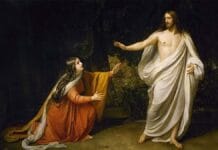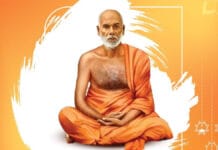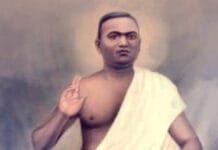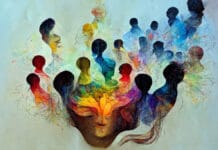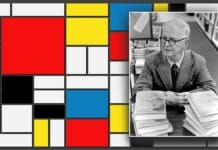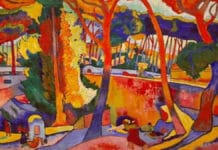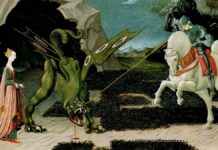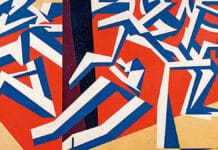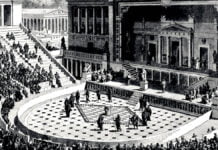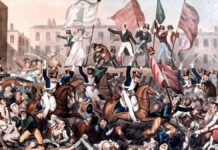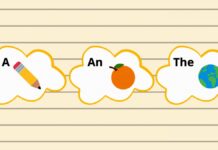Surrealism was an artistic and literary movement that began in the early 1920s in Europe, especially in Paris. It grew out of the disillusionment that followed the First World War, when many artists and thinkers felt traditional values and rational thinking had failed humanity. The movement was significantly influenced by Sigmund Freud’s ideas and theories, particularly his concepts of the unconscious mind, dreams, and free association. The founder, André Breton, published the Surrealist Manifesto in 1924, where he defined Surrealism as “pure psychic automatism.” What he meant was that art and writing should flow directly from the unconscious without being limited by logic, morality, or aesthetic rules.
One of the central aims of Surrealism was to break free from rational control. The Surrealists sought to bypass the conscious mind and allow hidden thoughts, dreams, and desires to surface in art. This is why so many surrealist works appear dreamlike or even bizarre—they are not trying to represent the external world accurately, but instead the inner world within us. Automatic writing, dream recording, and even experiments with chance were techniques they used to produce this kind of art.
Surrealism wasn’t only about art and literature; it was also a philosophy and even a political statement. Many surrealists were involved with leftist politics, particularly Communism, because they believed Surrealism could liberate not just the mind but also society from oppression and control. Their rebellion against logic and tradition was also a rebellion against the rigid structures of politics and culture.
Characteristics of Surrealism
Surrealism is mainly defined by its attempt to unite dream and reality into a single artistic vision. Instead of following logical structures, surrealist works often feature strange juxtapositions, bizarre imagery, or irrational scenes that render the familiar unfamiliar. The style is deliberately unsettling, but it also opens up new ways of looking at life. The movement insisted that imagination and unconscious thought were just as critical, if not more, than reason and rationality.
Principles of Surrealism
The Unconscious and Dreams
Surrealists believed that dreams and unconscious desires held truths suppressed by rationality. Art and writing should therefore access dreamlike imagery.
Automatic Writing and Automatism
Writers practised écriture automatique (automatic writing) — recording thoughts without censorship — to bypass logic and tap into the unconscious.
Juxtaposition and Surprise
Surrealist works often juxtapose unrelated objects, producing startling, dreamlike combinations. This technique highlighted the irrationality of reality.
Liberation of the Mind
Surrealism was not just about art but about transforming life itself — freeing people from social, moral, and cultural constraints.
Revolutionary Spirit
Breton and many Surrealists connected the movement with radical politics (especially Marxism), hoping to change not just consciousness but society.
Role of the Unconscious and Dreams
A significant influence on Surrealism came from Freud’s theories of the unconscious and dream analysis. Surrealists believed that the human mind hides its most profound truths in dreams, slips of the tongue, and suppressed desires. By accessing these, either through automatic writing, dream journals, or spontaneous artistic experiments, they felt they could reveal a “higher reality” that ordinary consciousness could not reach.
Techniques and Methods
To create their works, Surrealists employed a range of unconventional techniques. Automatic writing allowed writers to let words flow freely without planning. In painting, artists employed methods such as frottage (rubbing surfaces to create random textures), collage (combining cut-outs to form new images), and exquisite corpse (a collaborative game where different people drew parts of a figure without seeing the others’ contributions). These methods were designed to bypass rational control and let the unconscious speak directly.
Major Figures of Surrealism
Some of the most influential surrealist artists and writers include André Breton (the leader and theorist), Salvador Dalí (known for dreamlike and hyper-realistic paintings), René Magritte (who challenged perception with witty images), Max Ernst (pioneering collage and frottage), Joan Miró (whose playful, colourful forms expressed subconscious freedom), and Luis Buñuel (in film). Each had a distinct style, but all shared a common commitment to exploring the irrational.
Visual Style in Art
Surrealism in painting is particularly striking. Dreamlike landscapes, distorted objects, and unexpected combinations of everyday things often mark these paintings. Salvador Dalí’s melting clocks in The Persistence of Memory are a classic example, illustrating time as something fluid and unstable. René Magritte, another surrealist painter, used everyday objects like pipes, hats, or apples but placed them in strange and illogical contexts, making us question reality and perception itself. Magritte’s famous painting The Treachery of Images (“This is not a pipe”) challenges viewers to think about the difference between an object and its representation. Max Ernst, meanwhile, experimented with collage and frottage (the technique of rubbing textures onto paper) to reveal unexpected patterns and figures. These images weren’t random nonsense; they symbolised deeper fears, anxieties, or subconscious truths. The style can vary—from Dalí’s hyper-realistic precision to Joan Miró’s abstract, playful forms—but the goal was always to spark surprise and new thought.
Surrealism in Literature
In literature, Surrealism had its own techniques. Surrealist writers experimented with both poetry and prose to capture the raw flow of thought. Writers such as André Breton, Paul Éluard, and Louis Aragon practised automatic writing, where they wrote continuously without planning or editing, letting words and associations flow from their subconscious. Breton’s Nadja mixes autobiography, dreams, and philosophical musings into a fragmented narrative. Éluard and Aragon combined beautiful imagery with illogical associations, making their work feel both lyrical and uncanny. The point was not clarity but intensity—words were meant to break free from rational meaning and open doors to hidden mental landscapes. The aim was to capture thought in its rawest form, free of rational interference. The writing often feels fragmented or strange, but that was intentional—it mirrored the structure of dreams and unconscious thought. Surrealism influenced poets and novelists worldwide, including writers in Latin America who combined Surrealism with magical realism.
Surrealism in Cinema
Cinema became an ideal medium for expressing Surrealism. Directors like Luis Buñuel shocked audiences with films that defied conventional storytelling and logic, full of disturbing and dreamlike images. Luis Buñuel and Salvador Dalí’s Un Chien Andalou (1929) is one of the most famous examples. The film contains shocking and disjointed scenes—like the infamous slicing of an eyeball—that make no logical sense but evoke powerful emotions. Later directors, such as David Lynch, Terry Gilliam, and even Alfred Hitchcock in parts of Spellbound, employed Surrealist imagery to disturb, excite, or provoke their audiences.
Surrealism in Theatre and Performance
Though less prominent than in art and literature, Surrealism influenced experimental theatre through symbolic sets, dreamlike scenarios, and nonlinear structures. Antonin Artaud, though diverging from Breton’s circle, developed the “Theatre of Cruelty,” which shared Surrealism’s aim of shocking audiences into new awareness.
Political and Philosophical Dimensions
Surrealism was not only about art but also about liberation. Many Surrealists were associated with Marxism or anarchism, believing that freeing the unconscious mind was linked to freeing society from oppression. Breton linked Surrealism to Marxism, assuming that the liberation of the unconscious must go hand in hand with social revolution. He argued that Surrealism was “above all a revolutionary movement.” This gave the art a deeper purpose: not just to shock, but to change how people saw the world and how they lived in it. However, the movement fractured over political disagreements, especially regarding Communism. Still, Surrealism maintained its rebellious spirit against bourgeois norms, colonialism, and authoritarianism.
Legacy and Influence
Although the original Surrealist movement reached its peak between the 1920s and 1940s, it continues to have a profound influence on art, literature, and popular culture. Elements of Surrealism can be seen in advertising, fashion, music videos, and contemporary cinema. In advertising and popular culture, surrealist imagery (like unexpected juxtapositions or dreamlike distortions) still appears to grab attention and unsettle the audience. Movements like magical realism in Latin America borrowed Surrealist ideas and reshaped them to fit their own cultural contexts. The lasting influence of Surrealism lies in its bold statement: imagination, dreams, and irrational impulses are vital parts of human life and creativity.
Criticism of Surrealism
Obscurity and Elitism: Its reliance on private dreams and symbols often made it inaccessible.
Contradictions: The claim to absolute freedom clashed with political alignments, especially with Communism.
Commercialisation: Some critics argued Surrealism became aestheticised and commodified, losing its radical edge.
Surrealism was not simply an art movement but a philosophy of life. By seeking to merge dream and reality, unconscious and conscious, it offered a radical critique of modernity’s constraints. Whether through Dalí’s uncanny landscapes, Magritte’s paradoxes, or Breton’s manifestos, Surrealism sought to liberate the human imagination, revealing that reality is far stranger and more fluid than reason would admit. Its influence endures, reminding us that behind the surface of the ordinary lies the vast, untapped potential of the unconscious.

